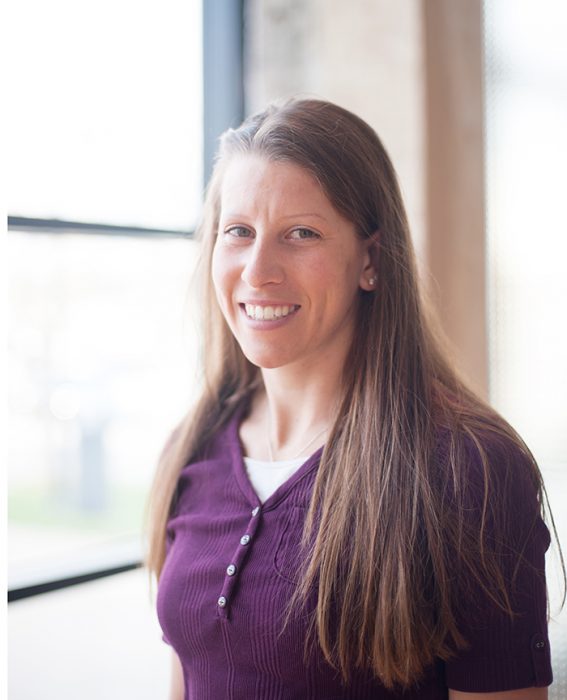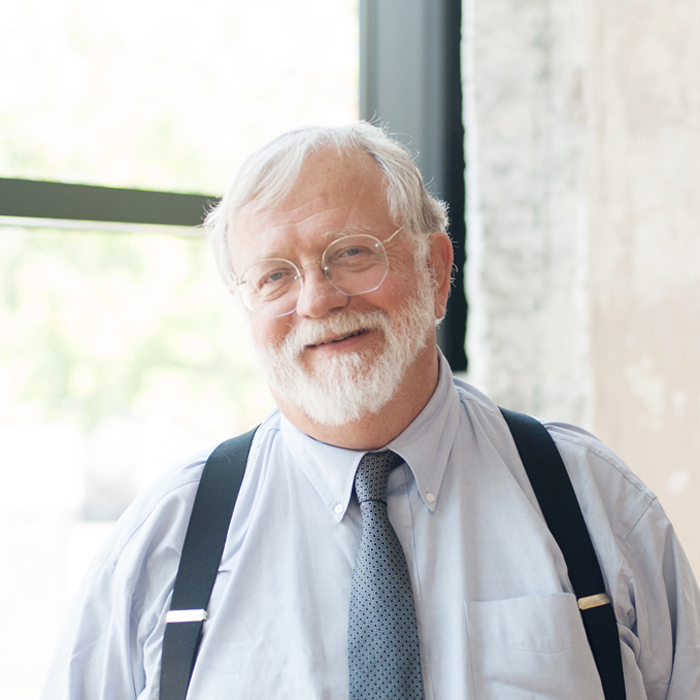What does success look like? Find out about the philosophies and influences that Tom Wallace believes contributed to his professional and personal accomplishments. Plus, get an inside look at several unique projects and a few intangible victories that Tom views as his most prominent achievements.
25) What do you consider to be your biggest or most significant professional accomplishment?
“Hiring some really smart, talented, and thoughtful people to help Wallace Engineering grow from a one-man firm to a 175 person, national firm with five offices.”
Over the years, many people have asked Tom what he attributes the success of his company to, and his answer is always the same.
“I hired a lot of people who are smarter than I am to work for Wallace Engineering and keep them from competing with me.
“That’s slam dunk, my most significant accomplishment!”
Tom owns three commercial properties in Tulsa - including the renovated grocery warehouse that houses Wallace’s headquarters - but the one he is most proud of is Pershing Studios.
Several years ago, the almost-100-year-old Pershing Elementary School building was in disrepair and set to be razed. But Tom and a few others saw potential. They had a vision to turn the abandoned classrooms into studio apartments.
“We did all the things that people told us not to do...But now we’ve got studio apartments that have 14 foot high ceilings, 800-900 square feet, and huge classroom windows. And there were a couple dozen people or couples crazy enough to want to live in an elementary school classroom.”
The studios have become home to an eclectic group of artists, musicians, entrepreneurs, attorneys, gardeners, and others who host events or play basketball in the gymnasium and get together on the patio that was once the school playground.
“It’s a real community with people from 83 years old down to 18. It’s pretty neat.”
Tom also takes pride in the role he’s played in shaping the streetscapes of downtown Tulsa through his participation in the Tulsa Arts District Association and Up With Trees.
Tom headed the Arts District Association’s mission to develop and implement a streetscape plan funded through taxes and the adjacent property owners. The results have garnered attention. Recently, a commission from Longview, TX came to have a look for themselves and hear from the George Kaiser Family Foundation and the Association regarding how they can make it happen in their own arts district.
Additionally, as an active board member and current president of Up With Trees, Tom has helped the organization plant and maintain over 1,000 trees in the central business district.
“I think it’s pretty neat when you look at what downtown used to look like and how it looks now. When you see the before and after pictures, without trees and then with trees, it’s pretty spectacular.”
From creative, adaptive-reuse projects to bold, new-design buildings, Tom has left his distinctive mark on a number of structures around Tulsa and beyond. While the Wallace Tulsa headquarters, Pershing Studios, and 60-story City of Faith Tower will always be his more well-known legacies, Tom also fondly recalled a few unique projects from his career that are not as well-known to people in this area.
In the late 1990’s, Wallace Engineering had the honor of working with A. Zahner Company and architect Frank Gehry to design the flowing, freeform metal facade of the Experience Music Project (now the Museum of Pop Culture, or MoPOP) in Seattle. Not only did Tom get to work with one of his idols, but he also ended up getting credit for naming a portion of the structural facade - the Madonna Wall.
“If you look at photographs, it looks kind of like the hood of Madonna. Gehry and Zahner liked to give their projects’ features names, and so Frank Gehry actually credited me with giving it that name. That was a pretty neat experience.”
Another fun project that stands out in Tom’s memory is the “Big Hats” at the LA Angels’ stadium. Tom did the 3-D structural model and analysis for these giant 60 foot diameter baseball cap-shaped canopies outside the stadium. When the design team submitted the initial spherical design, the owner came back and requested that it look more like a real baseball cap.
“So I took my structural model and just started pulling the points out until it looked more like a baseball hat. They liked it, approved it, and sent it back to the architect and fabricator. They basically built it off of my structural model. That was fun and was probably the last time I personally did a 3D analysis without assigning it to someone else to run.”
At the end of the day, Tom hopes he is remembered for high quality service, not necessarily the projects or structures he designed.
“I hope I am known for being an honest, helpful and valuable team member on many great projects around the country. I would hope my legacy is that I started a good engineering firm that continues to do great work long past my time.”
“I think my specialty was probably the design of composite steel and concrete mid-rise buildings. Although you might also include big box retail with steel joists and concrete block masonry, since at least one person said I have my seal and signature on more square feet of that type of building than anyone else in the world.”
But his favorite type? That could be anything from sculptures to mid-rise office buildings.
“My favorite type of project is one with a really thoughtful and talented client that respects my opinion and enjoys working with me. It really doesn’t matter what it is. When your client and you are a good match and you’re not a ‘necessary evil’ to him or her, it’s a wonderful thing to be part of that team.”
Tom is grateful for a number of individuals in his life who directly affected his career trajectory and contributed to his success:
“Louis Bass, my favorite and most inspiring structural professor at OSU School of Architecture.
“Mike Dwyer, my long-time friend and architect who gave me many fantastic jobs to work on and actually did drafting for me while he was also the lead design architect at McCune Partners, Inc.
“David Broach, my friend and architect who had the confidence in me to recommend that I start my own firm and then gave me work that led to our national client work.
“George Chamberlain, my Oklahoma State University advisor and architectural history professor, who taught us about modern architecture, Mies van der Rohe, and the Bauhaus.
“George Beggs (architect) and Arthur Benson (sculptor) for hiring me as a student at OSU to work as a laborer and draftsman at Spatial Structures, Inc. – designing and building experimental architecture.
“And last but not least, Susie Wallace, my wife, who had a really good job at Telex so I could start Wallace Engineering. She put up with the years of very long hours and me missing in action at home.”
Working hard, finding joy in that hard work, and turning that joy into a positive, can-do attitude with clients are attributes that Tom believes have served him well.
At 10 years old, Tom got his first job as a paperboy for the Tulsa Tribune and has had a job ever since. His work ethic helped him make a smooth transition from odd jobs into architecture school.
“Architecture school trains you to work too many hours and lots of overtime. And I was trained through the school of architecture at OSU to work through the day, through the night, and on weekends.”
This drive carried over to Wallace Engineering, where he routinely worked 60-80 hours a week. Although he doesn’t necessarily recommend it, his long hours were one of the keys to building his successful business. But to Tom, it never felt much like work
“I’ve always enjoyed working. I’ve never had a job in my life where I said ‘God, I wish I wasn’t working here, I wish I wasn’t doing what I’m doing.’ I’ve always enjoyed everything I’ve done. I think that’s unusual and pretty lucky.”
That was true when it came to structural engineering too.
“I loved engineering and solving engineering design problems. So it really wasn’t work to me.”
That joy that shines through to his client relationships.
“With regard to clients, I always try to do what I think they want me to do, try to put my head in their space. As the structural engineer, I’ve tried to be a problem solver, not a problem creator or a necessary evil.”
“You want your clients to walk away thinking ‘I’ve got that part of my problem solved - the structural engineering is going to be good. It’s going to be economical and reasonable and well done.’ So I hope I leave my clients with that feeling.”
“Since I worked so many long hours for many years at Wallace Engineering, I missed out on time that cannot be recovered with my family.”
Still, Tom almost always made time for Friday night dates with his wife, Susie, and made a point to connect with his kids.
“When my oldest son was about 4 or 5, he wasn’t really interested in talking or playing with me, I was just sort of a stranger...I came home often after he was in bed, and I got up and left before he got up and went to school.
“So I just started reading him books almost every night. I think we read Treasure Island three times. That’s one of my favorite books and one of his too. He became an adventurer, and I think maybe that had something to do with it.”
Tom went on to note that professional success has also come at the expense of a lot of time at a desk.
“Believe it or not 40 years ago, I was fit, I used to haul hay in college, weighed about 170 lbs and was pretty lean.”
“When I started Wallace Engineering, I decided it was more efficient for me to go to work and let someone else mow the lawn, work around the house, work on the car, and all that. One thing leads to another, and pretty soon all you’re doing is sitting at a desk working and not getting any exercise.
“Turns out that’s not the healthiest way to live and I don’t recommend it. Although it’s a way to efficiently run a business - to be the help, when you need the help.”
All this month, we’re celebrating 40 year of Wallace Engineering with 40 insights from our fearless founder, Tom Wallace. Each week, we’re tackling a different topic – from the founding and development of Wallace Engineering to entrepreneurship to technology to success. Click on the links below for more insights:
Part 1: Evolution of Wallace Engineering
Part 2: Entrepreneurship
Part 3: Structural Engineering and Technology
Part 5: Architecture, Hobbies, and Travel
Do you have a question for Tom? Let us know! Comment below or email me at krista.looney@wallace.design.



There are no comments.